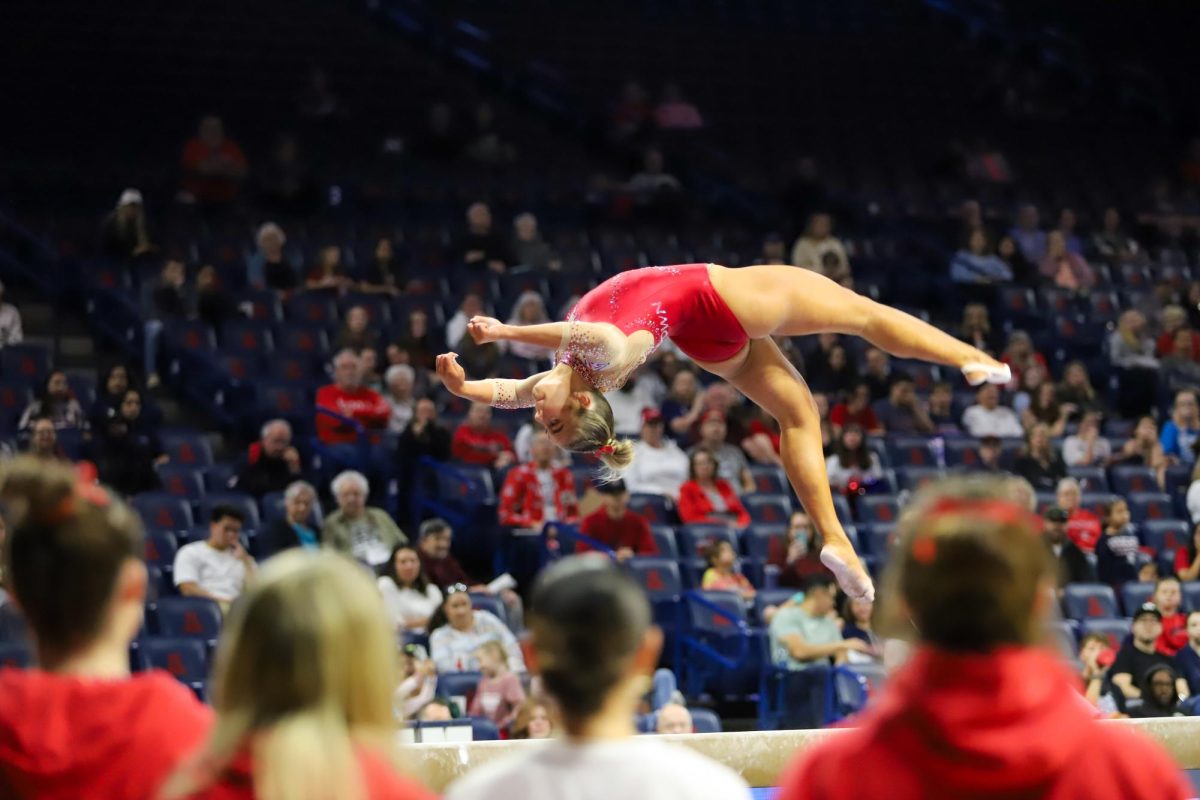The Arizona football program has been average. Its never outright won the Pac-10 or 12, never smelled Roses on New Year’s Day, and its last big accomplishment on the field may have been winning the Holiday Bowl back in 1998.
Yes, it’s been a mostly pedestrian football history, where 6-6 records have been celebrated, but things can change rapidly in the sport’s world just as head coach Rich Rodriguez proved last season.
Even with mild expectations in the pre-season, Rodriguez — in just his first year — led the Wildcats to an 8-5 record which included victories over highly ranked and established programs like USC and Oklahoma State. They concluded the year with a heart pounding, come-from-behind victory in the New Mexico Bowl, the UA’s second bowl win since 1998.
Couple the immediate success of Rodriguez with the willingness of the athletic department to better establish the program with facility upgrades, and the improvements go beyond just the “X’s” and “O’s.”
A recent release of statistics relating to the football program’s academics reveal how an emphasis on better academics is now a reality, something that hasn’t been the case in recent years. Just last week, the Academic Progress Rate or APR was released for the 2011-12 school year, and the UA finished first in the Pac-12 among football teams with a score of 980 out of a possible 1,000 points.
According to the NCAA, a school’s APR score is determined by the following: each student-athlete receiving athletically related financial aid earns one retention point for staying in school and one eligibility point for being academically eligible. A team’s total points are then divided by points possible and then multiplied by 1,000 to equal the team’s Academic Progress Rate score.
In other words, UA football players have been doing a good job going to class and staying in school, even when their playing days come to an end.
Even better news is that Arizona’s numbers from 2011-2012 are 24 points higher than the UA’s four year span taken from 2008-2012 when the football team averaged 956 in the APR, only good for fifth best in the Pac-12, according to the Arizona Daily Star.
How much credit should go to Rodriguez and the athletic department as a whole is difficult to determine, but Athletic Director Greg Byrne complimented Rodriguez and his efforts.
“Coach Rodriguez and his staff are committed to — and well-organized about — academics,” Byrne said to the Arizona Daily Star. “The position coaches talk to their kids about it regularly, and then coach Rodriguez does it as a whole.”
Byrne deserves plenty of praise as well for his commitment to creating an environment that makes school work and training an easy enough transition.
In a recent video the Athletic Department released, showcasing the new Lowell-Stevens Football Facility, Byrne pointed out how the stadium upgrades will only add to an already easily accessible setting for student-athletes.
The football stadium, classrooms, training, dining, and tutoring areas are all closely arranged.
“From an efficiency standpoint, there is nothing that is a better setup anywhere in the country, and it gives us and all of our student athletes the best chance for them to graduate and develop who they are to the maximum ability,” said Byrne at the end of the video.
So here we are, just a few months short of entering the 2013 college football season with our hopes as high as ever that this will finally be the year the Wildcats will reach the promise land, also known as Pasadena, Calif.
But maybe it’s more than that. Maybe it’s also about setting up a brighter future for the student-athletes who can do more than just catch a touchdown pass, or dunk a basketball.
As Rodriguez and Byrne have shown in their short time here, change is possible both on and off the field.
— Brian Peel is an opinions columnist at for the Arizona Summer Wildcat and a senior studying history. He can be reached at letters@wildcat.arizona.edu or on Twitter via @WildcatOpinions





















